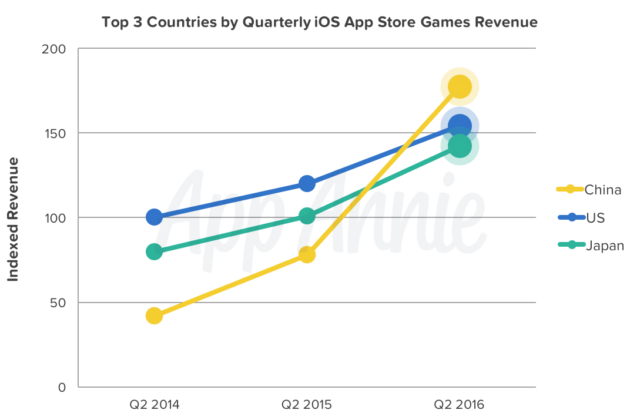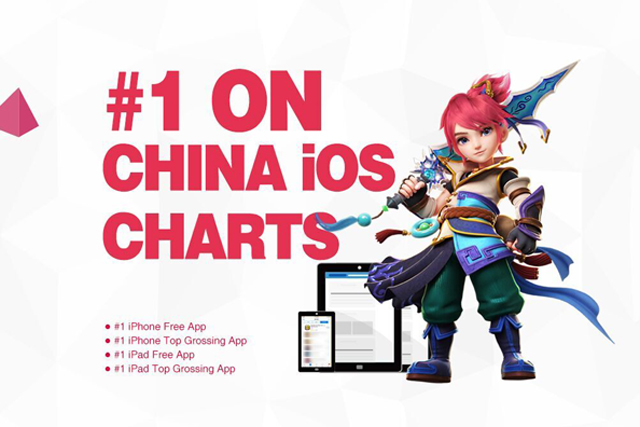For the first time, China has climbed to the #1 spot for iOS mobile game revenue, surpassing the US and Japan in the second quarter of 2016. According to analytics firm, App Annie, China’s sudden domination is attributed to the explosive popularity of multiplayer collaborative games in the region. Although the rise of the Chinese market to global leader was impressive compared to the last two years, it’s not exactly surprising. In fact, in a March report, App Annie predicted that the mobile gaming market would top $10 billion in 2016, and eventually reach $13.9 billion by 2019.
Together, China, the US and Japan are responsible for approximately 75 percent of gaming revenue on the iOS platform, with gaming as the single largest revenue driver. China alone nearly doubled the iOS App Store games revenue it had just a year earlier in second quarter of 2015.

So, which games are responsible for this huge leap in revenue? According to the report, locally developed games were responsible for a large portion of the year-over-year growth. Specifically, massively multiplayer online role-playing games (MMORPGs) dominate the Chinese mobile market. As evidenced in a May report by Newzoo, NetEase’s Fantasy Westward Journey is the only game to remain in the top ten since June 2015, while Fantasy Westward Journey 2 climbed back to number two in June, followed by Tencent’s King of Glory at number three. Fantasy Westward Journey 2 launched last October and the franchise consistently sits atop the App Store in the world’s biggest mobile market. While foreign publishers have seen success in the country, local publishers dominate the top iOS revenue chart. Tencent alone claimed about 45 percent of Chinese Android revenues in May, publishing 23 of the top 100 titles.
There was hope for foreign publishers, with Supercell’s Clash Royale ranking at number 10 by iOS revenue in the second quarter of 2016. However, now that Tencent owns Supercell, brands outside of China will have to get creative or establish strategic partnerships to increase brand awareness within the region.

